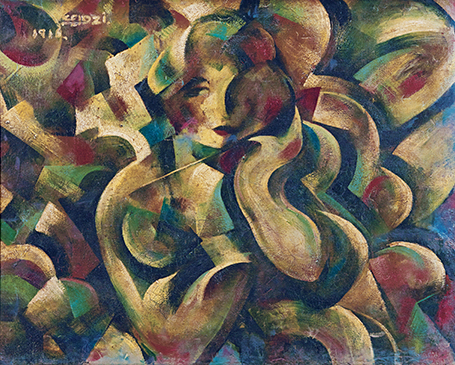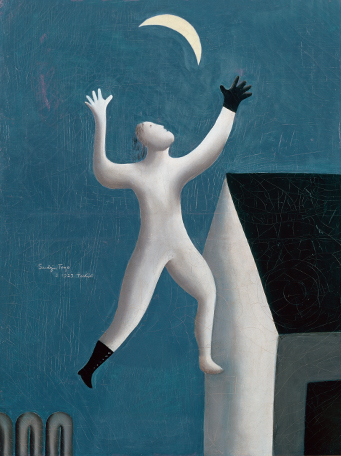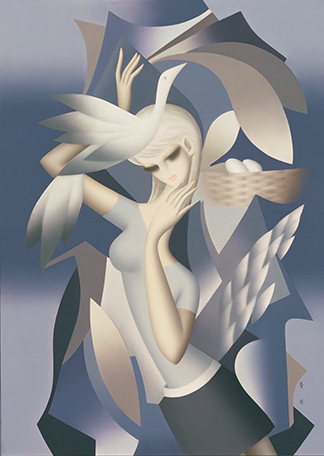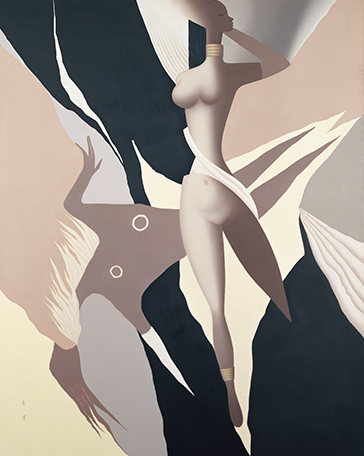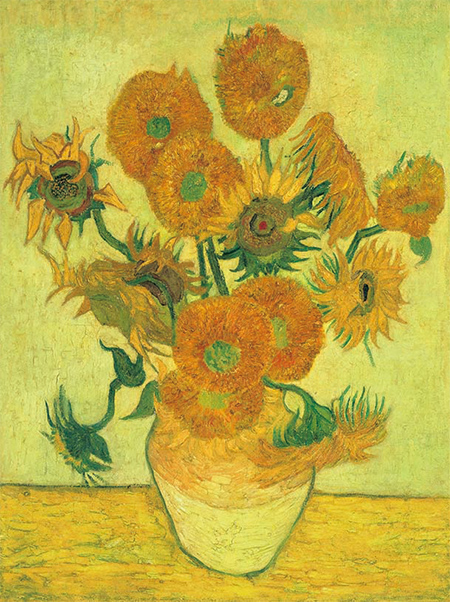Seiji Togo
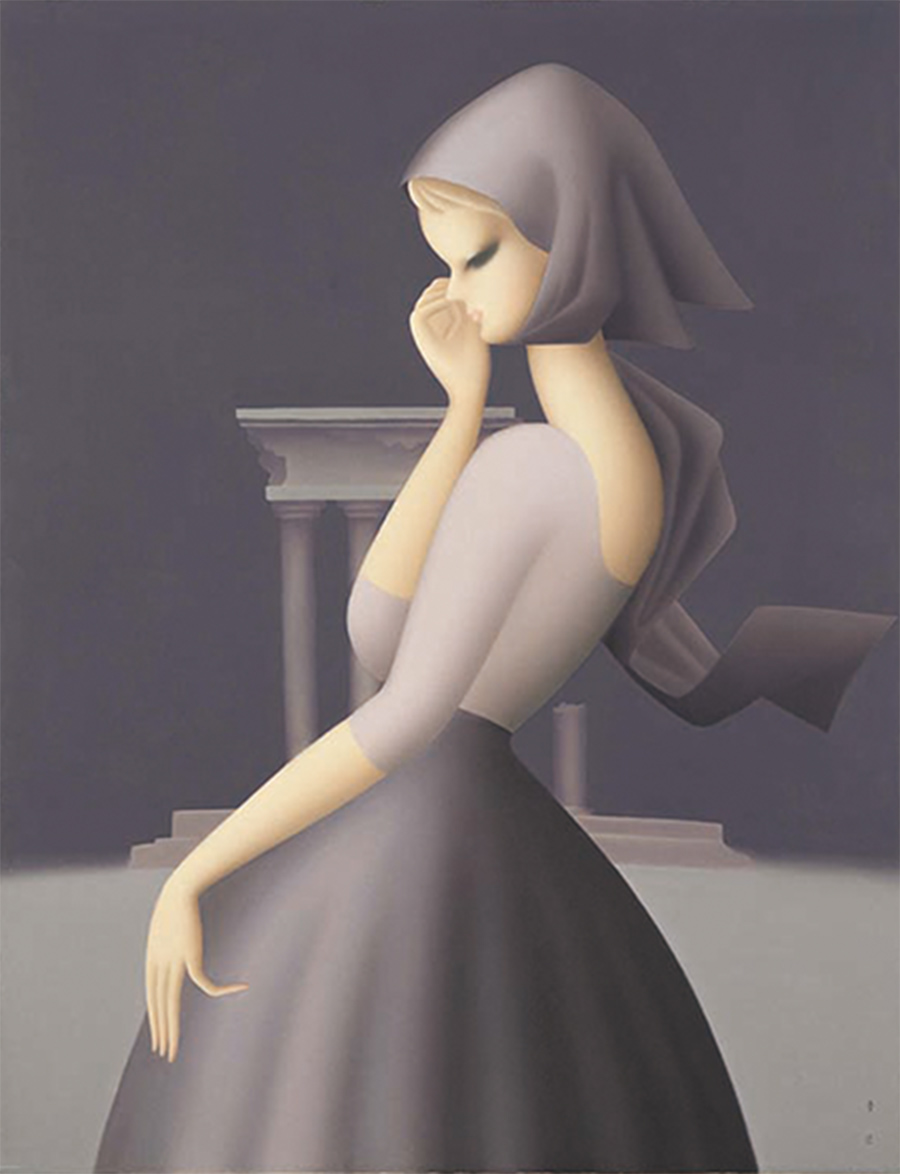
Nostalgia
In this painting, we see a woman standing motionless in front of the remains of what appears to be an ancient Greek temple. At the 5th Japan International Art Exhibition, it received the “Audience Award,” for which the recipient is chosen by votes cast by visitors to the exhibition. The “pleasing beauty” of the woman and the lyrical flow of the picture (a style which became commonly known as “Seiji Beauties” or “paintings of beauties in the Seiji style”) has been described by some as “commonplace.” However, regardless of whether the viewer likes this style of art or not, this picture nevertheless remains a masterpiece of the Togo style that lingers in the memory of many.
The ancient ruins seen in the background of the picture were added to Togo’s repertoire from the mid-1930s, when the general public began to become more familiar with his larger body of works. The idea of “nostalgia” had been one of Togo’s key themes since his 20s, when he spent seven years living in France. The painting Nostalgia itself was first shown to the public the year after Tokyo Tower was completed. No doubt, the sentimental emotions expressed here by Togo found resonance in the minds of viewers who were living in the midst of that period of high economic growth when the Tokyo landscape was undergoing dramatic changes.
Seiji Togo(1897 - 1978)
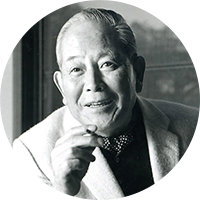
Born in Kagoshima Prefecture, Seiji Togo painted in oils in the Western style (known as Yoga in Japan) and was active in Tokyo as part of the Nika Society, an organization founded with the aim of promoting contemporary art in Japan. His first exhibited work, Woman with a Parasol, painted when he was just 19 years old, won the Nika Award in 1916, and it is considered to be a work of the earliest period of avant-garde art in Japan. During his seven-year sojourn in France from the age of 24, Togo learned from Picasso the importance of the idea of an artist committing oneself to one’s own unique style and proceeded to undertake research into traditional techniques of Western painting. During the course of his work, he also learned about decorative art techniques and design. Following his return to Japan, he created a new vision for the ideal modern feminine presence and proceeded to leave a diverse body of work including murals and illustrations.
Our museum’s collection currently contains approximately 240 works by Seiji Togo and other materials connected to his career, ranging from his early period to the latter years of his life, including around 70 oil paintings, about 150 of which were donated to the museum by Togo’s family after his death in 1978.
Chronology
-
1897(year of birth)
Born on April 28th in Kagoshima Prefecture.
-
1910(age 13)
Enters Aoyama Gakuin Junior High School.
-
1915(age 18)
Created works Works in a room at Kosaku Yamada’s Tokyo Philharmonic Orchestra Akasaka Research Institute.
Holds his first solo exhibition at the Hibiya Art Museum, and meets Ikuma Arishima, who becomes his mentor. -
1916(age 19)
Awarded the Nika Award for his first work displayed at the 3rd Nika Exhibition.
-
1921(age 24)
Studies in France. Also active in the Futurism movement in Milan.
-
1928(age 31)
Returns to Japan.
The 15th Nika Exhibition creates a special exhibition of 23 of his European works.
from Europe and Is awarded the 1st Showa Western Art Promotion Award. -
1931(age 34)
Becomes a member of the Nika Society.
-
1938(age 41)
The Kyushitsukai is formed within the Nika Society; Togo becomes an advisor along with Tsuguharu Fujita (Léonard Foujita).
-
1945(age 48)
After the end of WWII, Togo volunteers to join in the resurrection of the Nika Society.
-
1957(age 60)
Receives the Japan Art Academy Award, and in 1960 becomes a member of the Japan Art Academy.
-
1961(age 64)
Becomes the Chairman of the Nika Society and promotes overseas exchanges.
-
1969(age 72)
Is awarded the title of “Officier d’ordre des Arts et des Lettres” by the French government.
-
1974(age 72)
Goes to visit the Tassili in Algeria.
-
1976(age 79)
Receives the Order of the Rising Sun, Second Class with Rays. Seiji Togo Art Museum opens.
-
1978
Dies on April 25th in Kumamoto at the age of 80.
Overview of Seiji Togo’s Artistic Career
-
The avant-garde movement and Togo’s training in France1921~1928
Having first attracted attention in 1915 at the age of 18 as a new member of the Futurism movement in the avant-garde style, Seiji Togo went on to receive the Nika Award the following year when his works were displayed in the 2nd Nika Exhibition. During his seven-year stay in France which started in 1921, Togo began to conduct research into historical Western painting at art galleries while exchanging ideas with artists such as Picasso. Through this process, he developed his own unique style of painting which combined geometrical composition with a lyrical compositional flow.
Woman with Parasol1916 oil on canvas 66.1×81.2cm -
Modernism and wide-ranging work1928~early 1930s
After his return to Japan, Togo was influenced by the Modernism culture which was transforming the appearance of Tokyo during its reconstruction following the Great Kanto Earthquake. He designed simple yet stylish book-bindings , illustrations, interior décor, and stage art , all of which won widespread acclaim. Togo’s dream-like oil paintings, put on display at Nika exhibitions, became the subject of much discussion as a part of a “new direction,” along with the works of artists like Kigen Nakagawa and Harue Koga.
Surrealistic Stroll1929 oil on canvas 64×48.2cm -
Seiji-bijin and “the Togo style”Late 1930s~1950s
From around 1935, a major change occurred in Togo’s life. He began to take up the challenge of creating large-scale decorative paintings together with the veteran artist Tsuguharu Fujita (Léonard Foujita), and he began to receive requests for solo exhibitions almost every year from department stores and art dealers. As part of this development, Togo began to add to his repertoire various motifs that he had learned from famous works of Western art, and his new vision of the modern female beauty began to emerge.
Bird and Girl1971 oil on canvas 91.1×66.2cm -
Maturity and further exploration1960s~1978
From the 1960s onwards, Togo began to travel to countries all over the world almost every year as a participant in the international exchange exhibitions of the Nika Society. At the same time, Togo then began to try out new techniques involving thick applications of paint laid on with vigorous brushwork, as well as déformé styles resembling abstract paintings. He also started incorporating in his work portrayals of aspects of African, Arab, and South American customs of the countries he had visited and gathered material on and sketched during his travels abroad,
Tassili1974 oil on canvas 226.5×181.5cm
Seiji Togo Highlights of the Collection
-
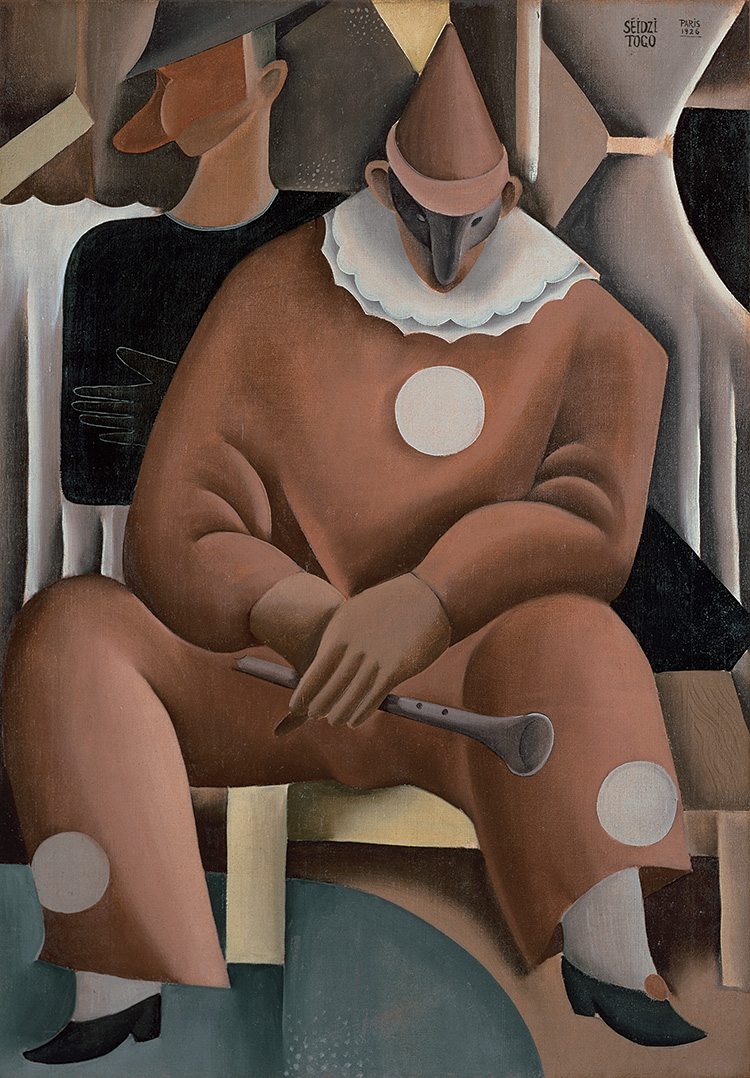
Pierrot
1926 oil on canvas 90.8×63.4cm
-
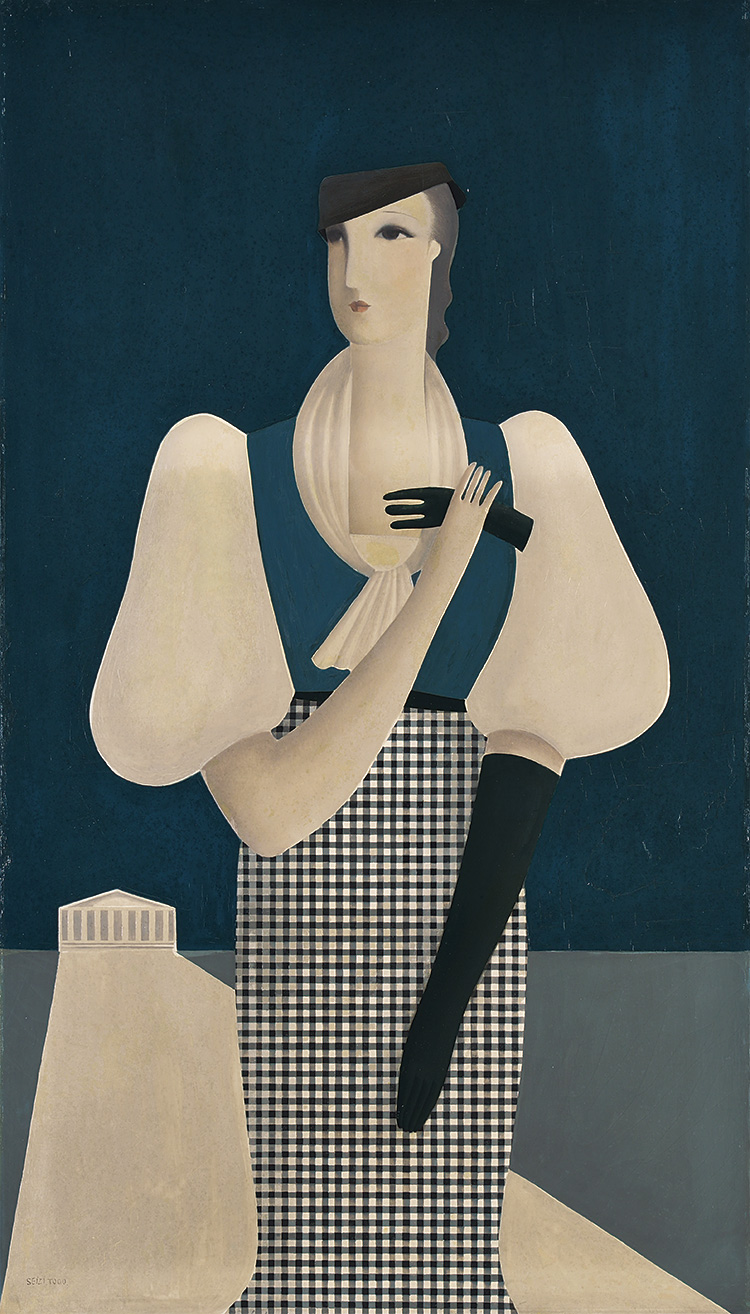
Black Gloves
1933 oil on canvas 119.2×68.2cm
-
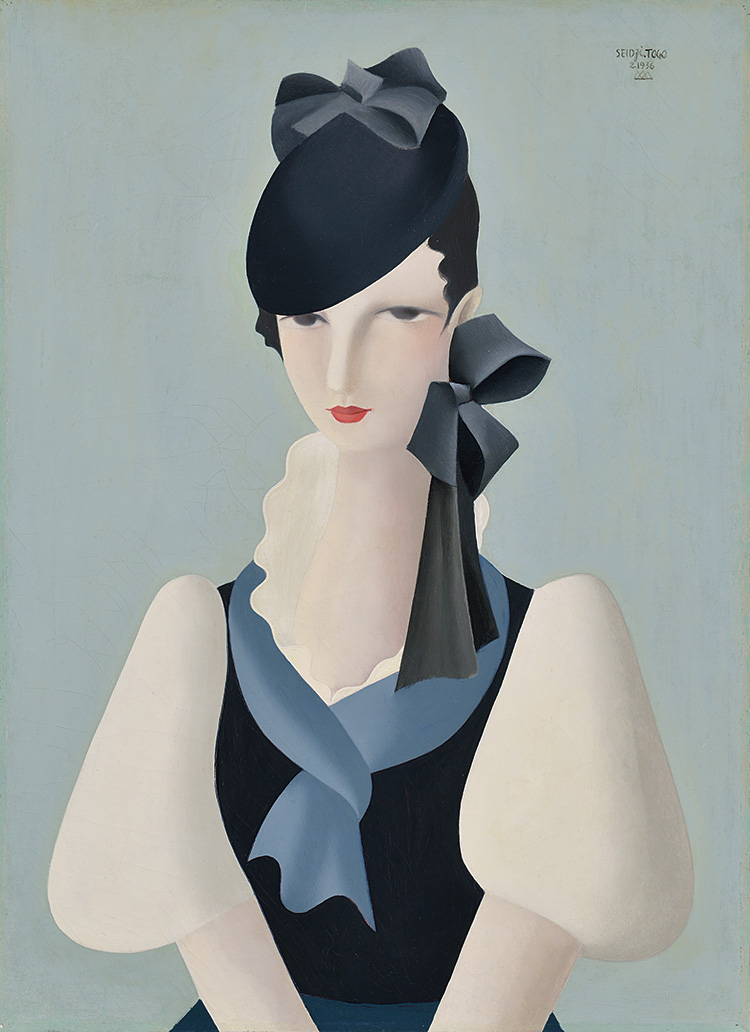
Portrait of a Woman
1936 oil on canvas 73.3×53.5cm
-
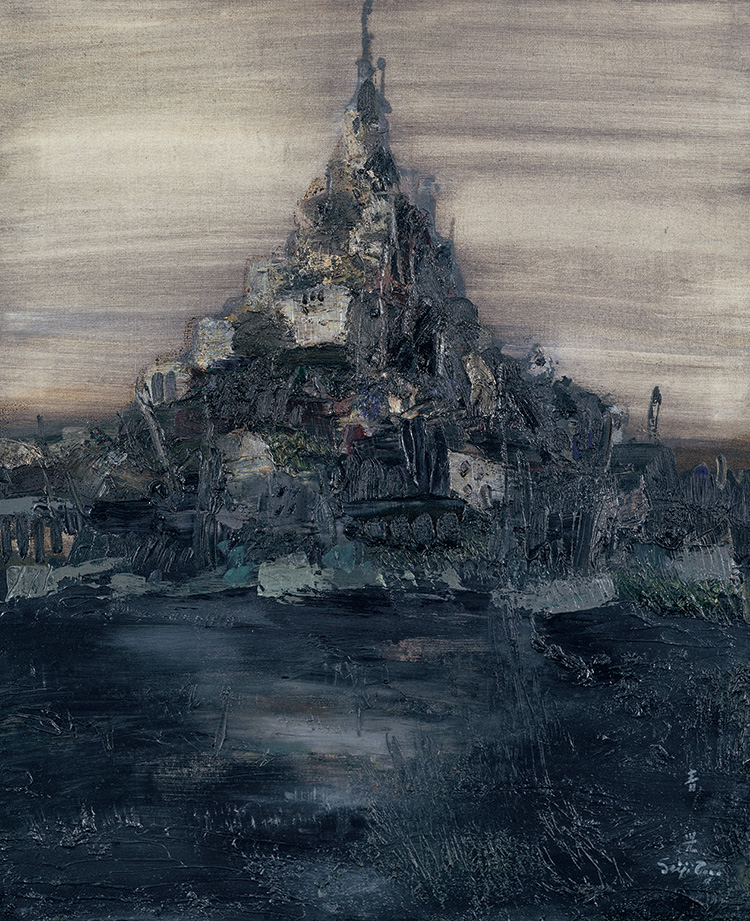
Old Castle
1970 oil on canvas 60.6×50.2cm
-
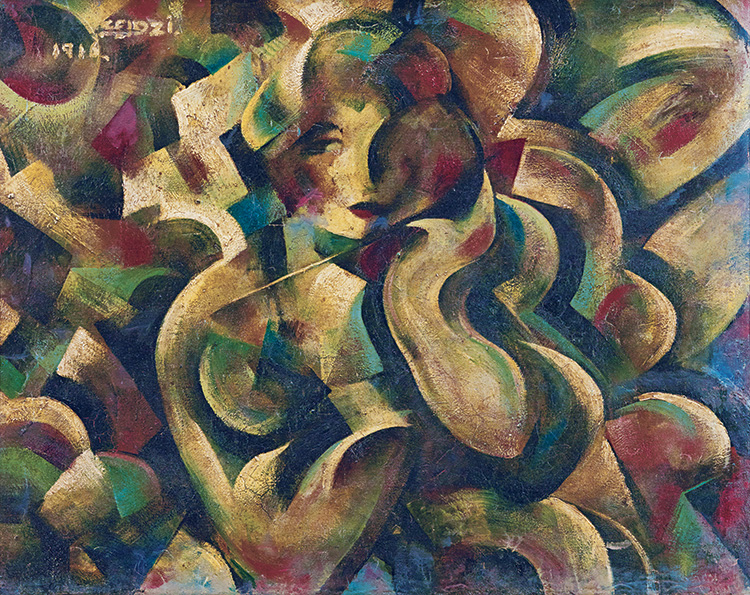
Woman with Parasol
1916 oil on canvas 66.1×81.2cm
-
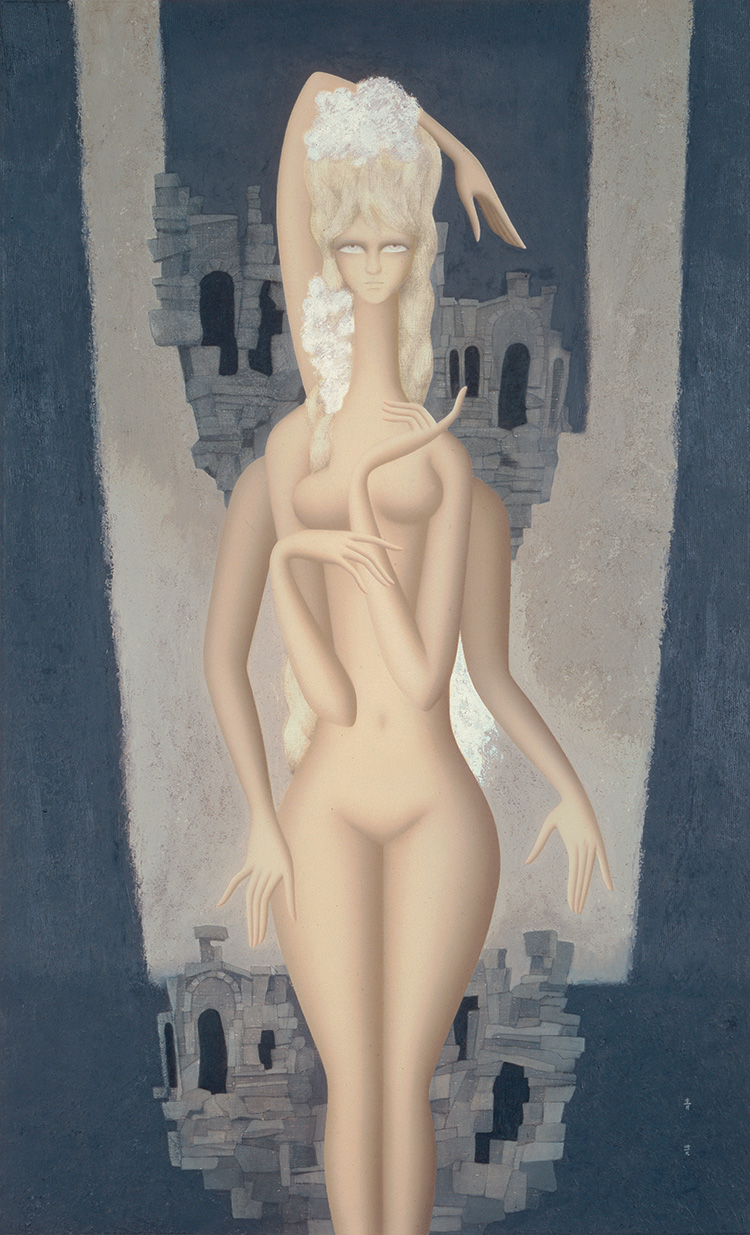
Adoration of Female Body
1972 oil on canvas 145.8×89.5cm
-
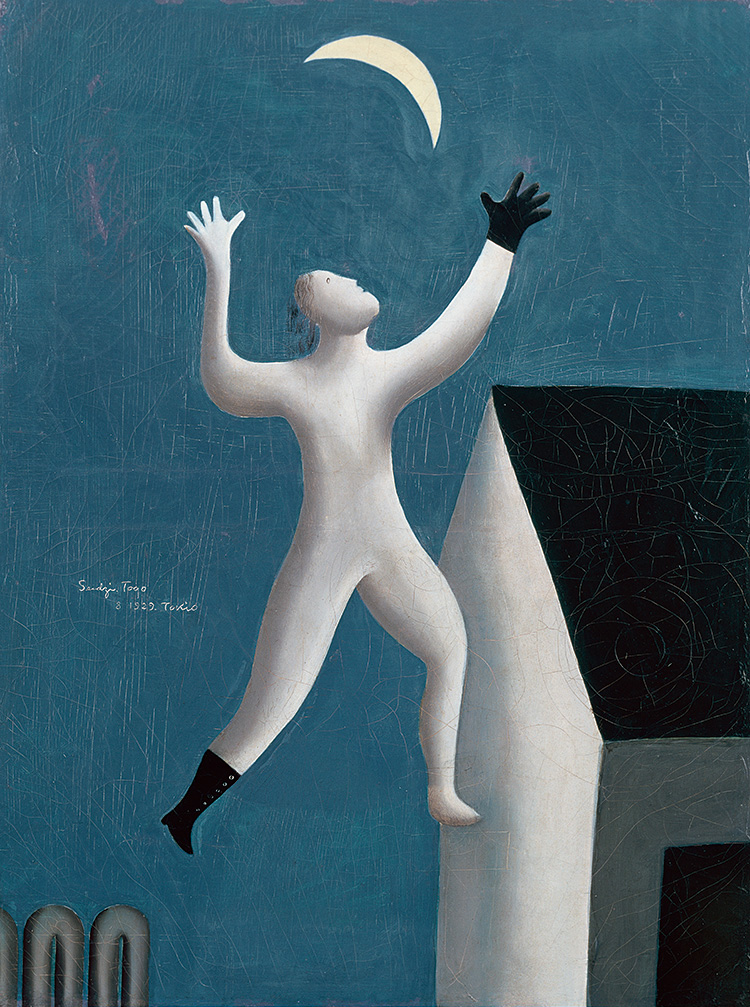
Surrealistic Stroll
1929 oil on canvas 64×48.2cm
-
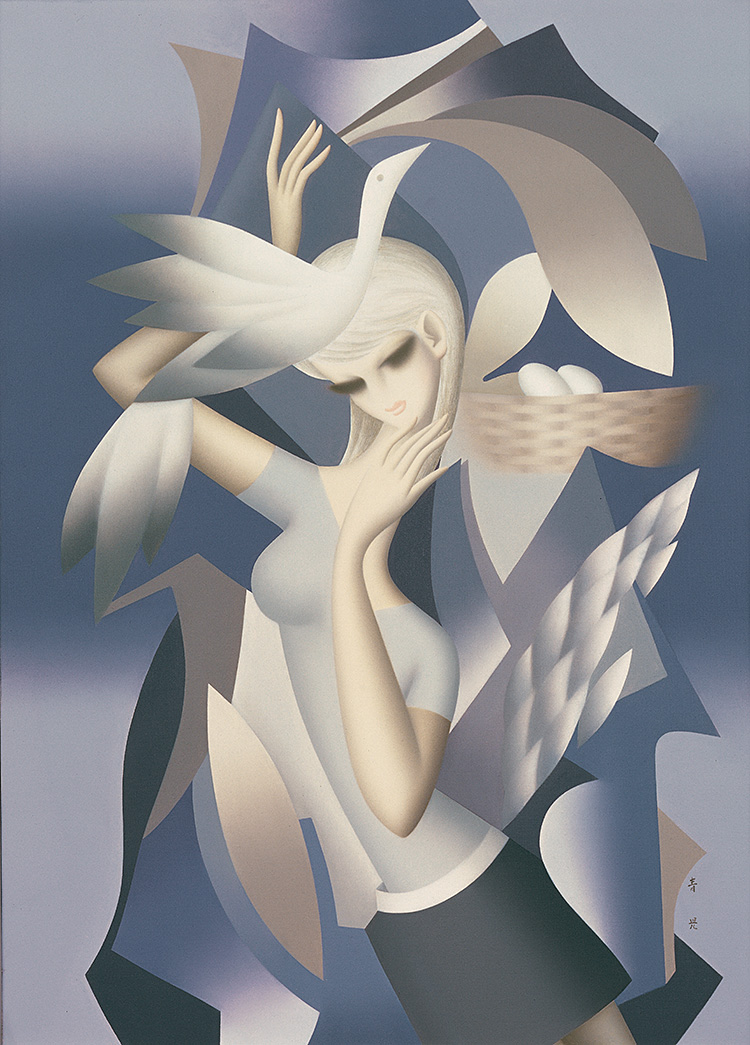
Bird and Girl
1971 oil on canvas 91.1×66.2cm
-
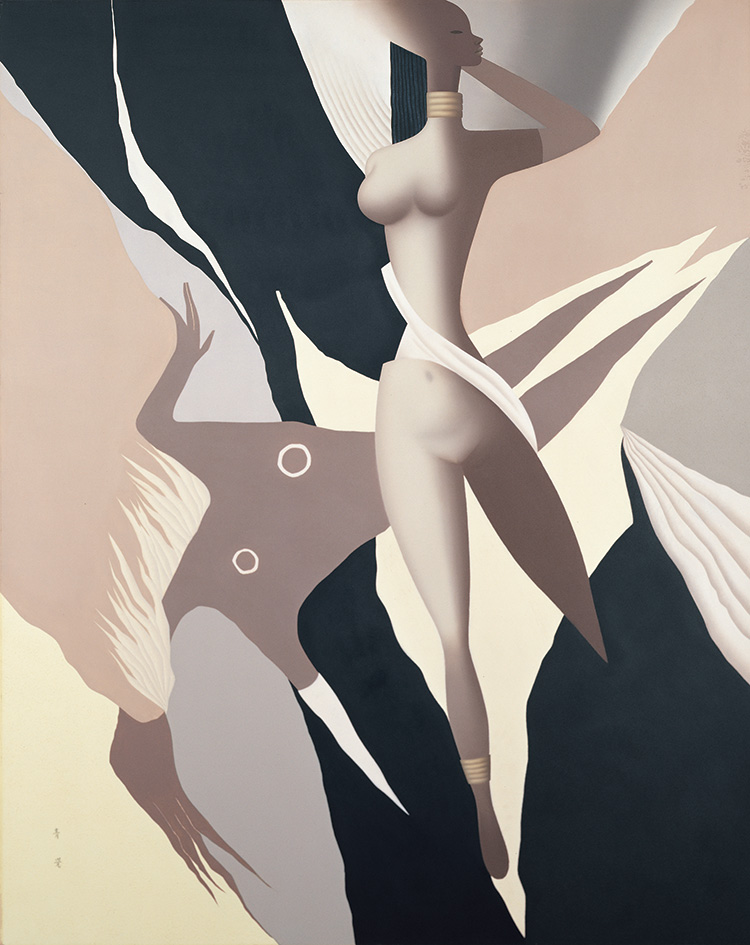
Tassili
1974 oil on canvas 226.5×181.5cm
-
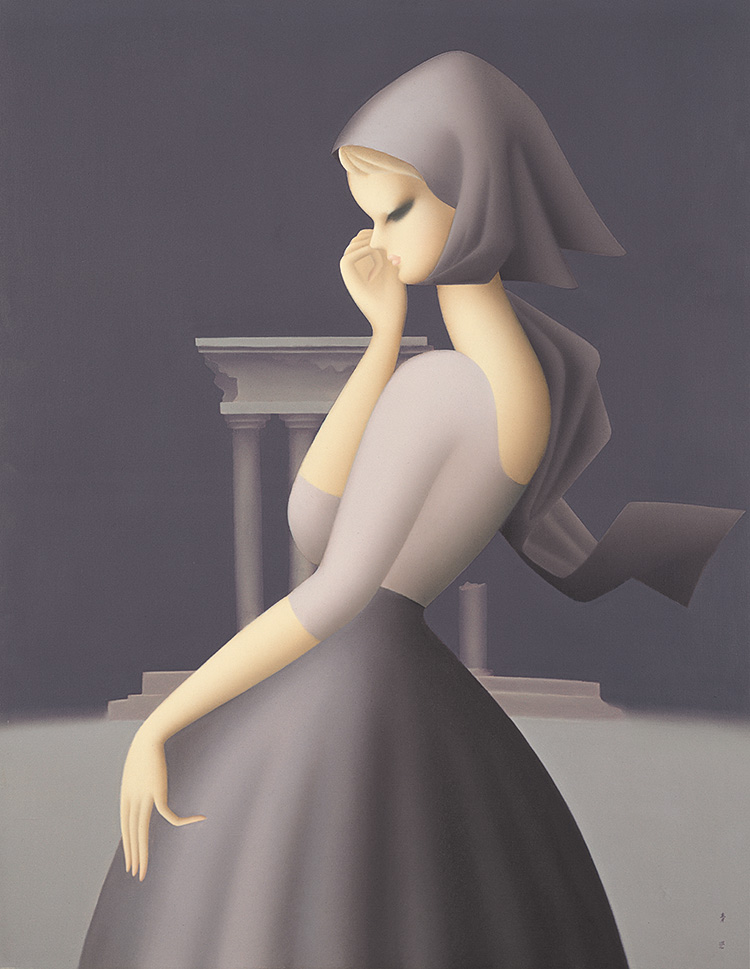
Nostalgia
1959 oil on canvas 116.1×90.7cm
-
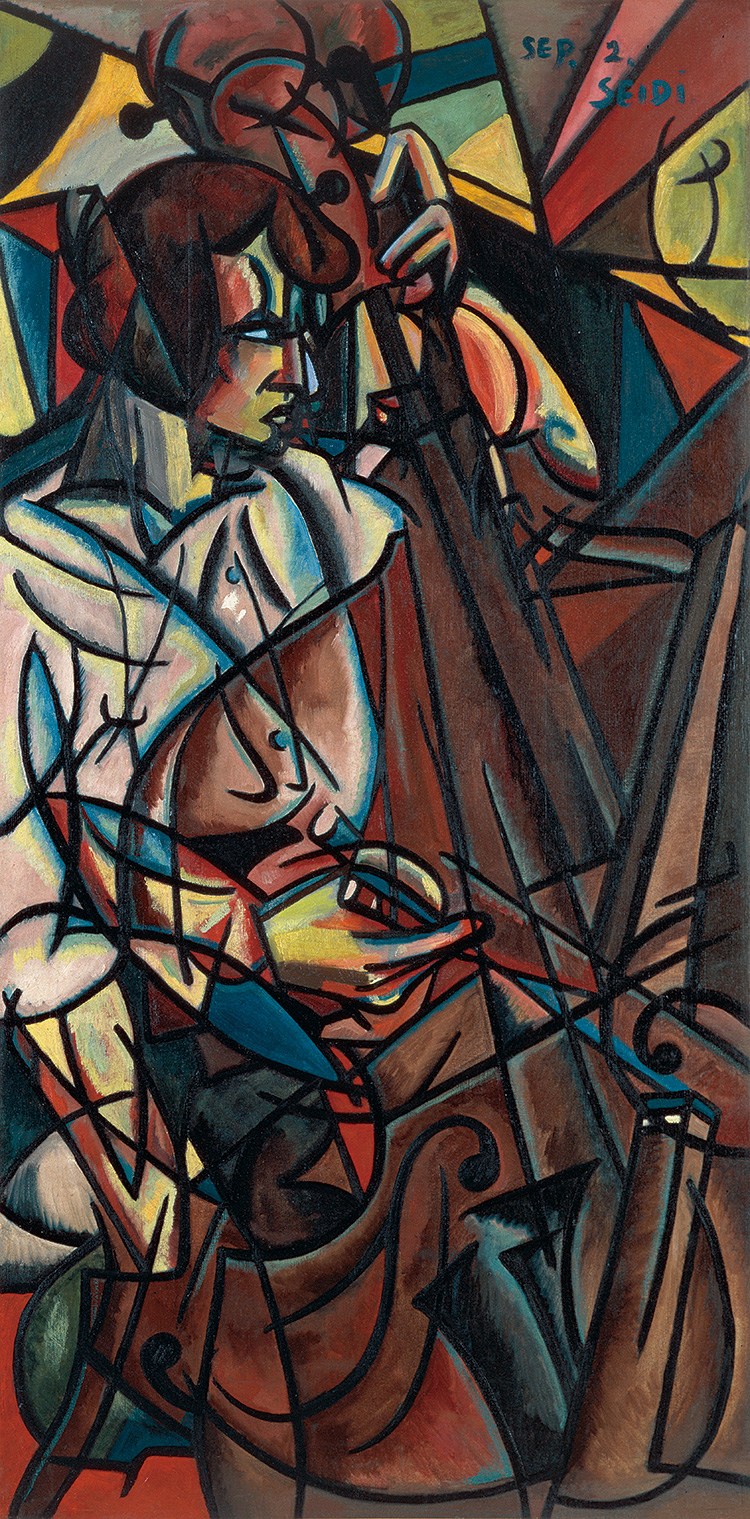
Playing the Contrabass
1915 oil on canvas
